JAN 8, 2019 / DISPATCH FROM HAWAII
TARO:
A Surprising Necessity for Climate Change
Words by Nicole Ziza Bauer
Photography by Antonio Diaz
There are over two hundred words that mean “rain” in Hawaiian. In Manoa Valley, a lush residential zone on O’ahu’s south shore, the rain is called Tuahine. It’s not only a word but a name, personifying a beautiful woman with long hair who dances in sheets across the valley. Hawaii is a place where there’s not a vague understanding of Mother Nature but an observation of her daily presence and influence. She’s as visual as she is visceral, available to both visitors and locals alike.
But what does it mean for everyone that the rain in Hawaii is changing? That not only are Tuahine’s perfect sheets not so uniform anymore, but downpours and flood events are intensifying? Can fifty inches of rainfall in one day—which Kauai experienced this past April—be ignored as distant island news?
Or is there a lesson in these weather patterns? A warning, signaling the time has come to seek the high ground? Otherwise, we may risk getting stuck in the deep, as I recently found myself.
Accepting an invitation from Hawaiian Airlines to explore O’ahu’s cultural and culinary heritage, I actually found myself thigh-deep in the mud of a taro patch at Kākoʻo ʻŌiwi, a community-based non-profit located in a land division (ahupuaʻa) called Heʻeia.
Kākoʻo ʻŌiwi’s mission is to restore Heʻeia’s agriculture in a way that mirrors the original intent of all Hawaiian ahupuaʻas as self-sustaining ecological districts. I was surprised to learn that planting taro—a native species of Hawaii that isn’t a root or a tuber, but a nutrient-rich underground stem called a corm—is a great way to gauge the health of the land. Taro is also a way to move it forward.
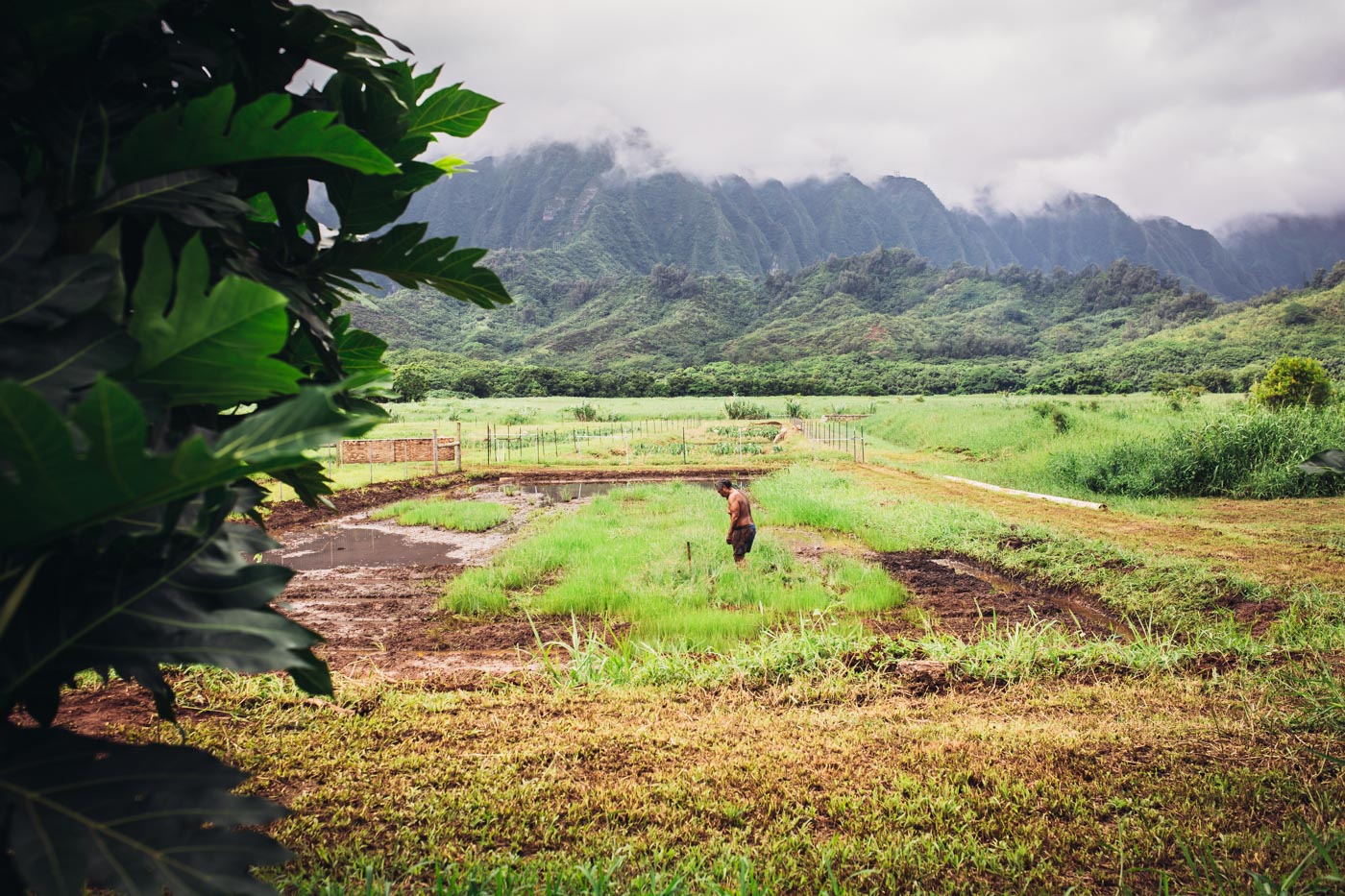
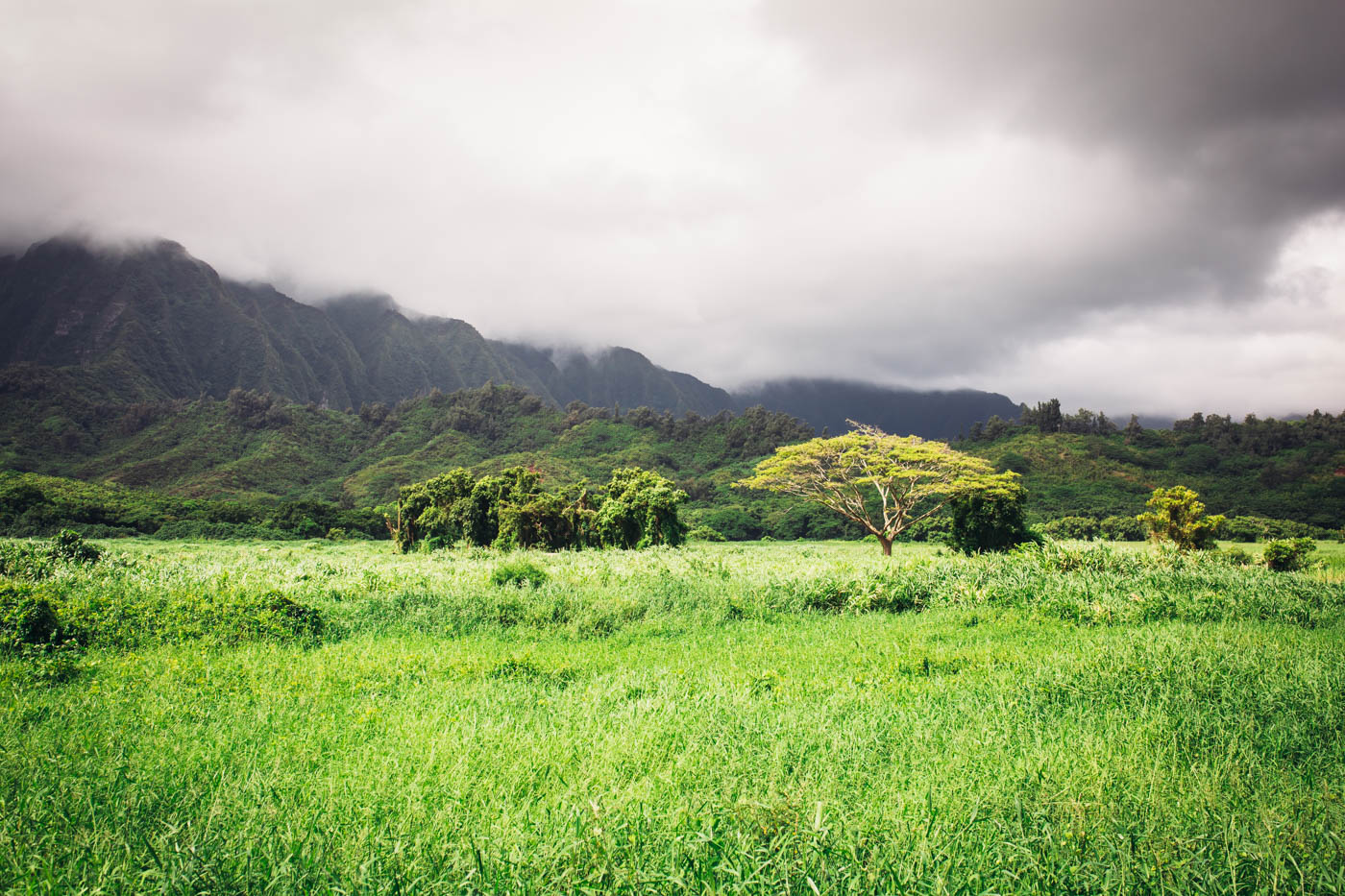
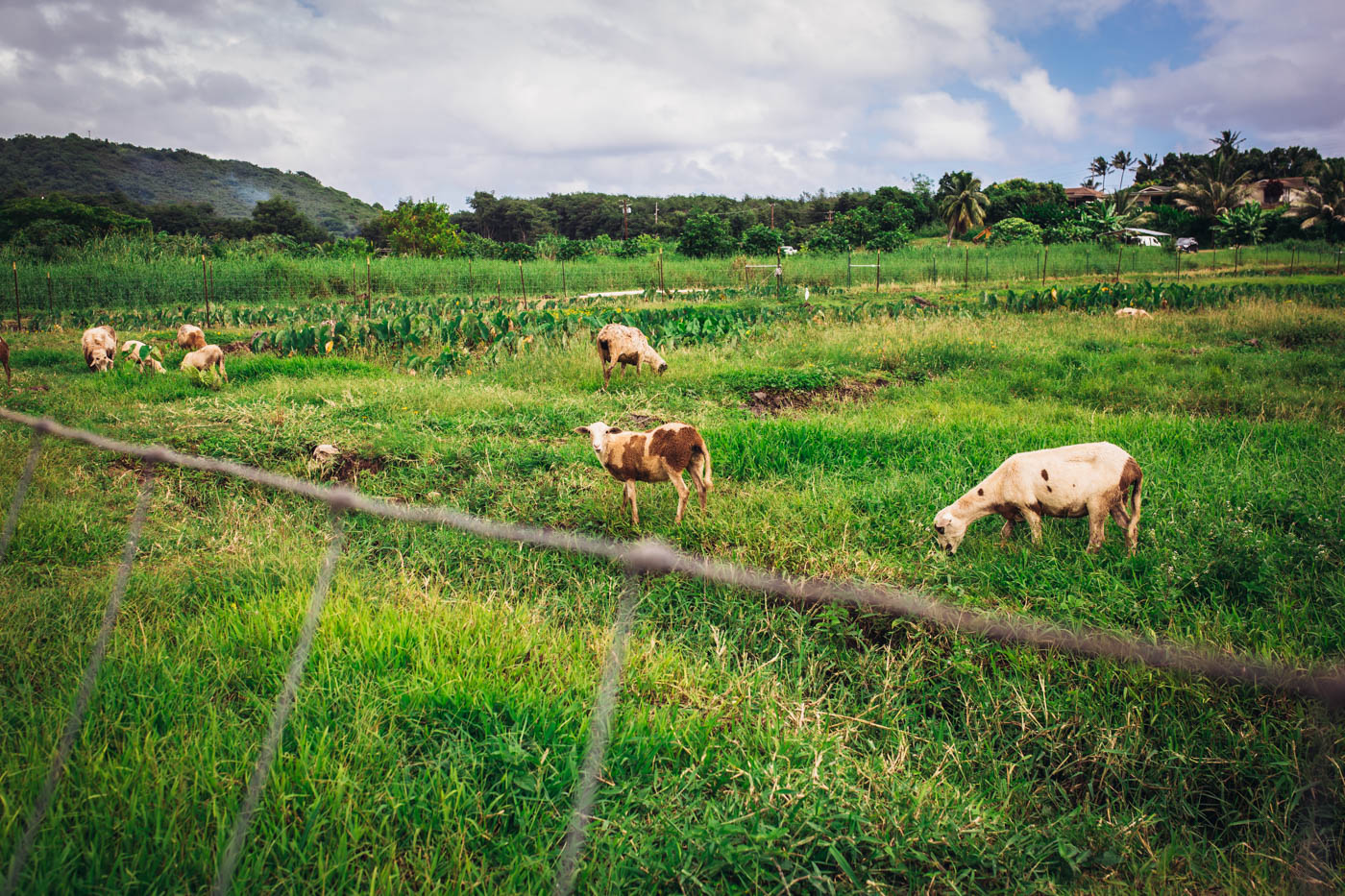
“We need to start growing food that can be resilient to climate change,” shares Executive Director of Kākoʻo ʻŌiwi, Kanekoa Kukea-Shultz. “Food that won’t get completely wiped out after a hurricane rolls over it.”
Alex Da Silva, Hawaiian Airlines’ Senior Manager of External Communications and head of the Sustainability Employee Resource Group, tells me, “Hawai‘i is our mission as a destination airline; but more importantly, it is home to most of our employees. They understand we have a responsibility to help protect and preserve our islands’ natural resources … Even though aviation is among the most efficient methods of transportation, we are constantly working to reduce our carbon footprint and lead by example.”
Among its long list of sustainability initiatives, Hawaiian Airlines uses state-of-the-art dispatching programs to reduce carbon emissions before, during, and after a flight. They’re also currently transitioning to a new fleet of Airbus A321neo, the most fuel-efficient aircraft of its type and able to burn sixteen percent less fuel.
According to studies published last year by the National Oceanic and Atmospheric Administration (NOAA), sea levels in Hawaii are projected to rise by three or more feet as early as 2060—largely due to the melting of the earth’s cryosphere and trajectory of global greenhouse gas emissions. This is roughly forty years sooner than previous projections had estimated.
More recent reports, including the 2018 Fourth National Climate Assessment, also forecast an increase in extreme weather events, stating that the Pacific Islands “are particularly vulnerable to climate change impacts due to their exposure and isolation, small size, low elevation (in the case of atolls), and concentration of infrastructure and economy along the coasts.”
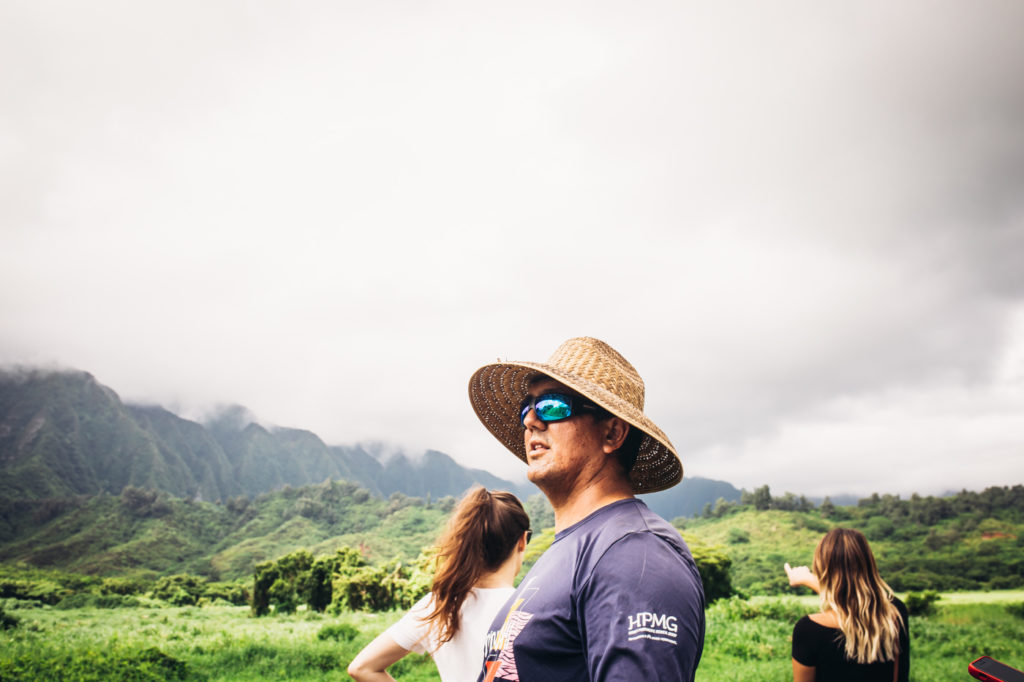
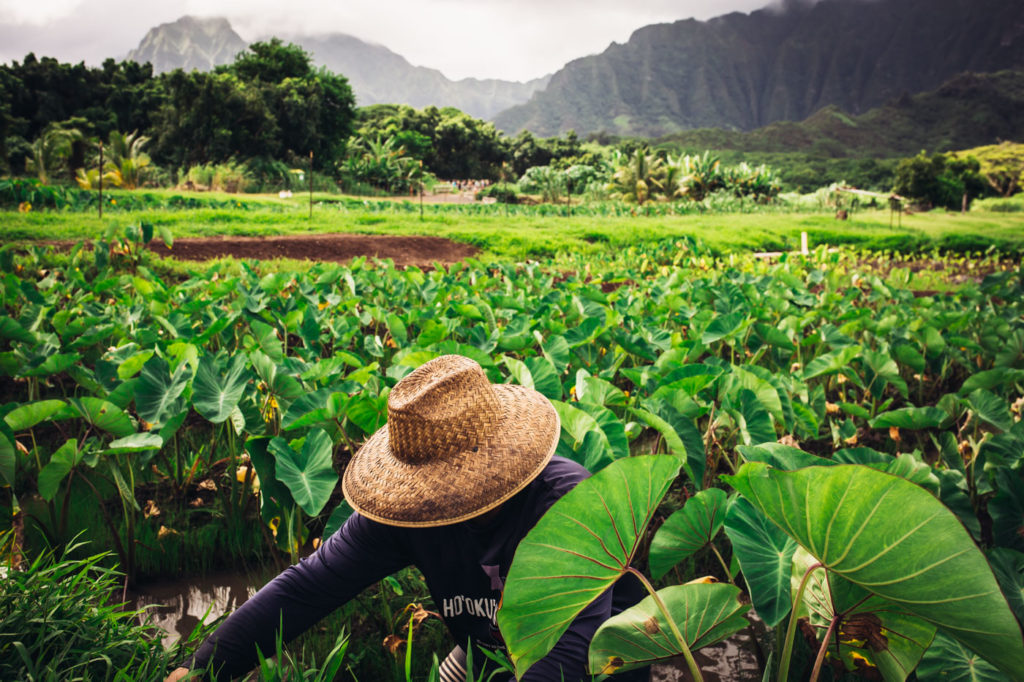
It only takes one look at the estimated $43 billion-worth of damage caused by Hurricanes Irma and Maria in Puerto Rico to realize that Hawaii may soon be next. As a result, the state has been advised to engineer solutions now for the coastal erosion, high wave flooding, and passive flooding that’s expected.
Back at Kākoʻo ʻŌiwi, Kukea-Shultz shows my tour group an aerial shot of the property from 1928. “We have a saying in Hawaii, ‘looking back to the source,’ [meaning] what our ancestors did on this land,” he says. “All you see around us at one time was taro patches. From an ecosystem standpoint, we know when you are able to replant and rebuild taro patches, then you’ll start to see a lot of the endangered birds and species coming back. That is what we’re seeing.”
Additionally, Kukea-Shultz explains, taro patches have the unique ability to serve as natural water reservoirs. Akin to the massive, man-made water basins you’ll pass on the highway driving into Heʻeia, wetland taro patches are constructed in a way that sequesters water during flood events. A taro corm can survive for at least a week underwater, and is able to regrow if a patch is flooded out. This makes taro the best choice for Heʻeia’s emergency food supply in the case of a devastating event.
“We’re able to hold almost twenty million gallons [of water] if we’re able to convert [the land] back to this old photo right here,” says Kukea-Shultz. “We’ve had massive floods where the waters are flowing over this [valley] and the patches are still intact. These taro systems can be resilient to a category five [storm].”
With that in mind, Kukea-Shultz invites me and the other visitors to get a first-hand look at this elephant ear-shaped miracle plant ourselves. He leads us along a path through Kākoʻo ʻŌiwi’s lush 405-acre property. Breadfruit trees line the trail and distant mountains stand draped in vegetation. Sheep baa and misty clouds hover low.
We even pass a group of schoolchildren learning kuleana (responsibility) for themselves, each other, and the land. Kukea-Shultz points them out.“Our children will really have to decide how they will function in Hawaii. That’s why we’re pushing so hard for certain native foods [like taro and breadfruit],” he says. “If we can ensure the cuisine is more native, more natural, more resilient to changes, then we won’t be so dependent on bringing all of our food from California or South America.”
We reach a taro patch, one of several wide, rectangular plots, and Kukea-Shultz encourages each of us to play the student. Slipping off socks and shoes, we slide toe-first into the mud where taro is neatly planted in rows submerged in a shallow pond of water. To weed the taro, we pull grass-like clumps growing along the border of the row and re-stack them in the middle of the patch. It’s strangely soothing and melodic—the sloshing sound of freed clumps mixed with the silky squish of mud underfoot. It feels foreign and yet, right at home, losing my edges in the soup of earth.
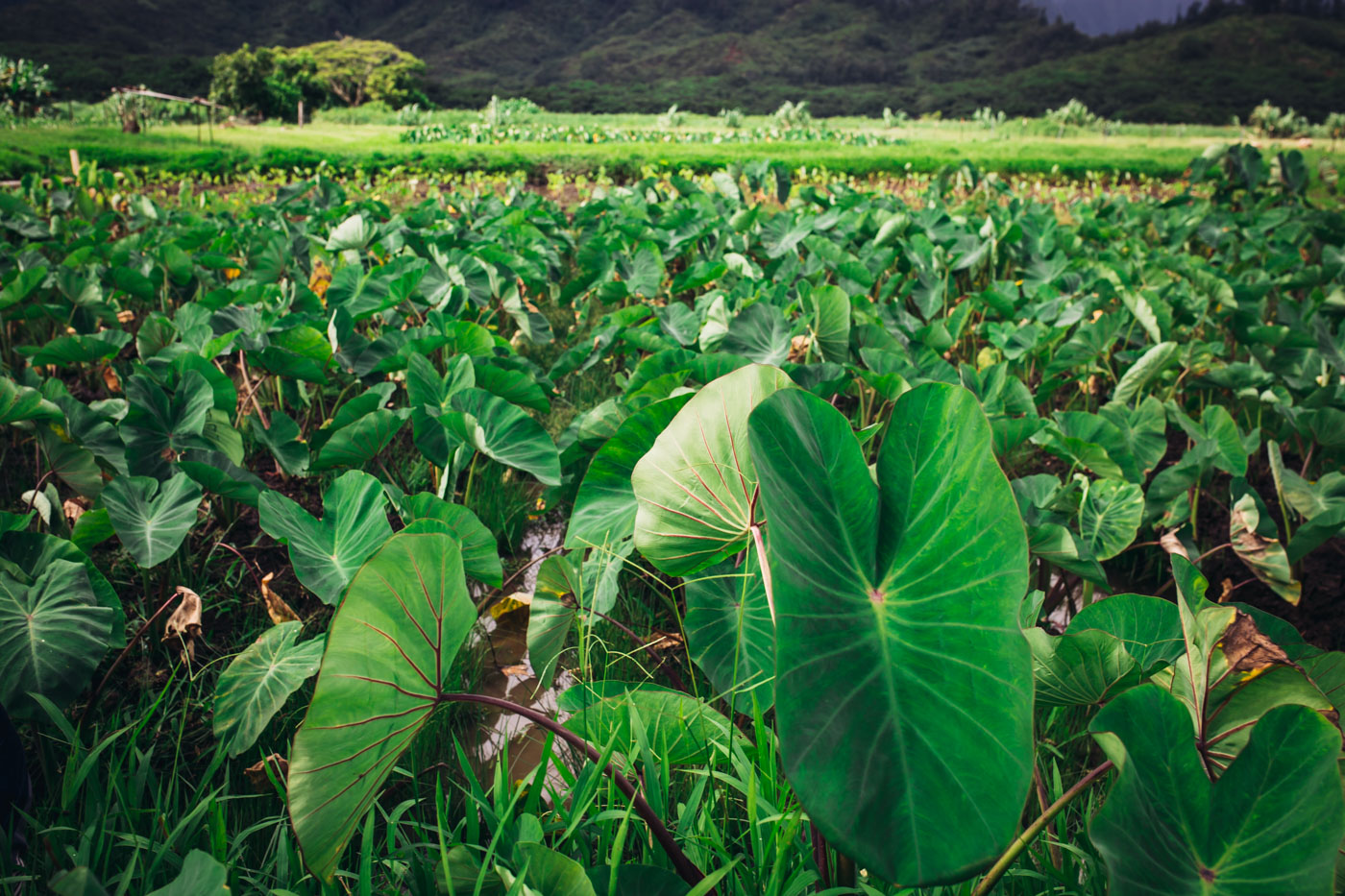
It’s not enough just to grow and preserve indigenous crops at Kākoʻo ʻŌiwi. There’s also a determination to show how satisfying and delicious these ingredients can be. After hosing myself off from the patch, I end the day eating lunch prepared by Chef Mark Noguchi, one of Hawaiian Airlines’ Featured Onboard Chefs.
The in-flight program, as explained by Renee Awana, Managing Director of Product Development at Hawaiian Airlines, seeks out “up-and-coming tastemakers who are leading Hawai‘i as the culinary center of the Pacific, and [who] are passionate about putting our islands’ rich and diverse culture at the center of the plate.”
“Gooch” as Noguchi is frequently known among locals, certainly fits the bill. He opened his first restaurant less than a mile from Kākoʻo ʻŌiwi and now serves as co-founder (with his wife, Amanda) of Pili Group, specializing in locally-sourced catering and community education.
“I’m unapologetically geocentric,” Noguchi tells me. “I think I live in the best place, in the best world. It’s only natural for most of us who have grown up in Hawaii to grow up outside, so we’re more in touch. That’s what I talk about in our cooking. When you eat our food, there should be a strong sense of place on the plate.”
I look down at my plate. Kākoʻo ʻŌiwi-grown shishito peppers blistered right before eating. Kākoʻo ʻŌiwi-grown breadfruit spiced with chili, sesame, and a ginger salsa verde. Kākoʻo ʻŌiwi-grown taro steamed, served alongside a stew of its leafy top, lu’au. Although primarily a meal of green and purple, Noguchi’s cooking offers a kaleidoscope of flavor on the intake. If there was a better plate to mimic this land, I couldn’t think of one. It might as well have been the earth itself.
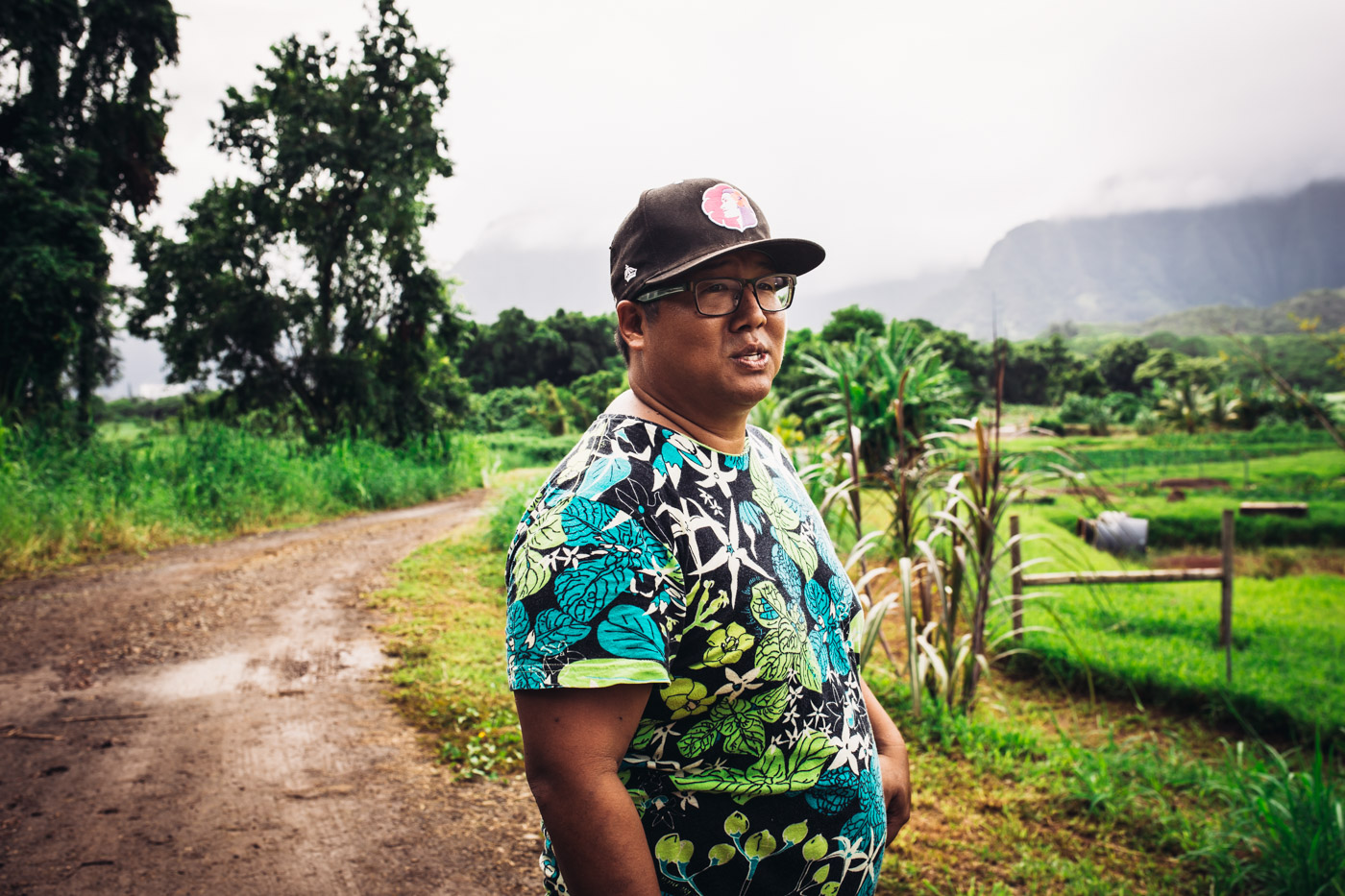
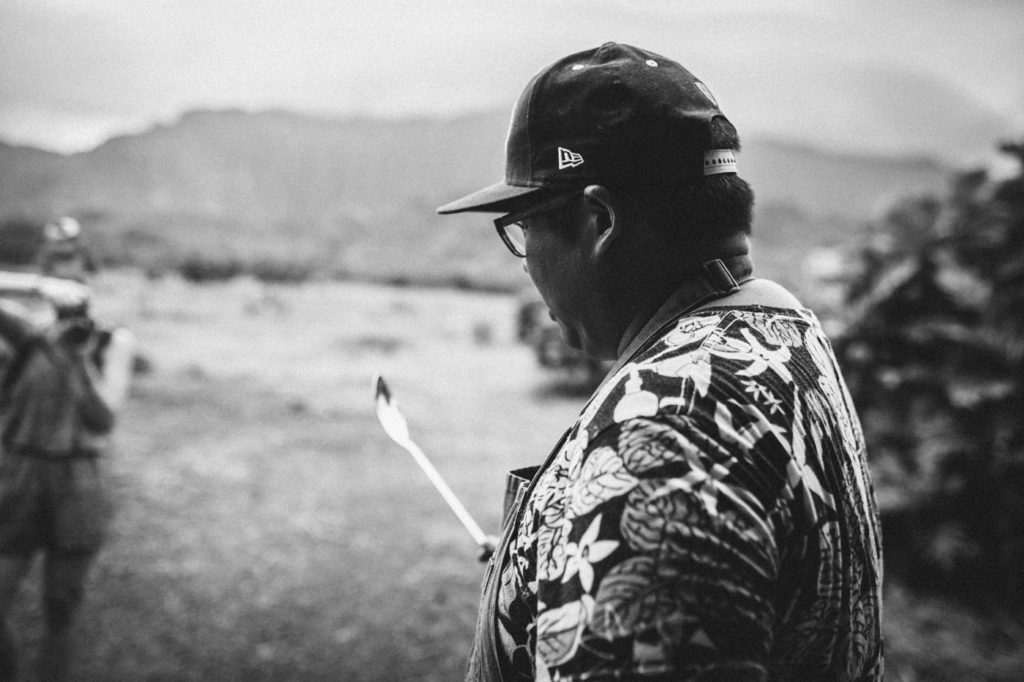
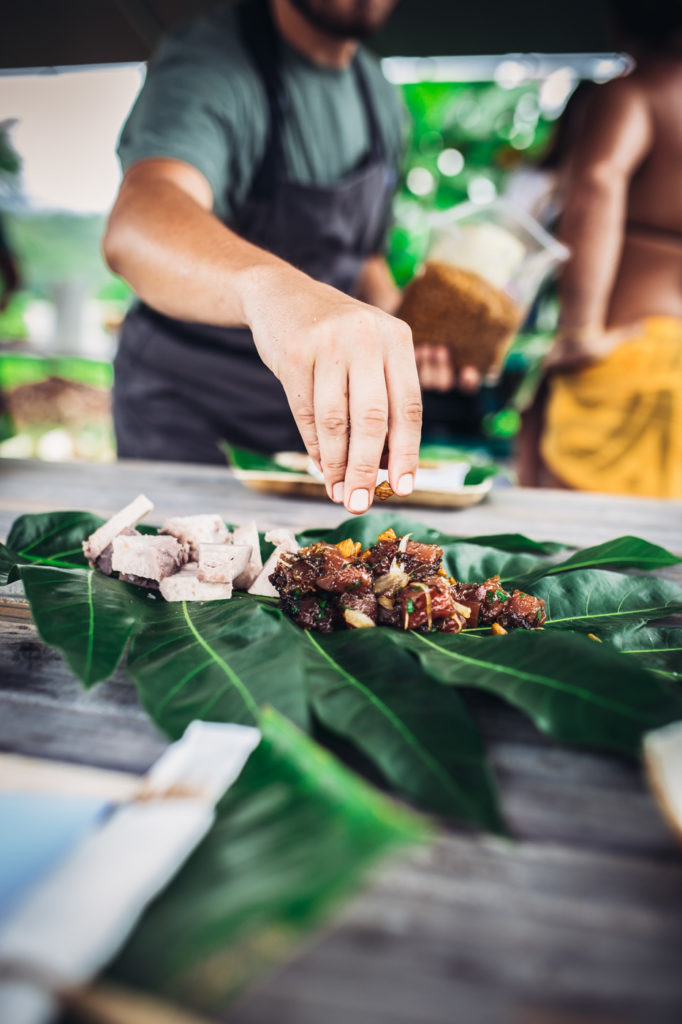
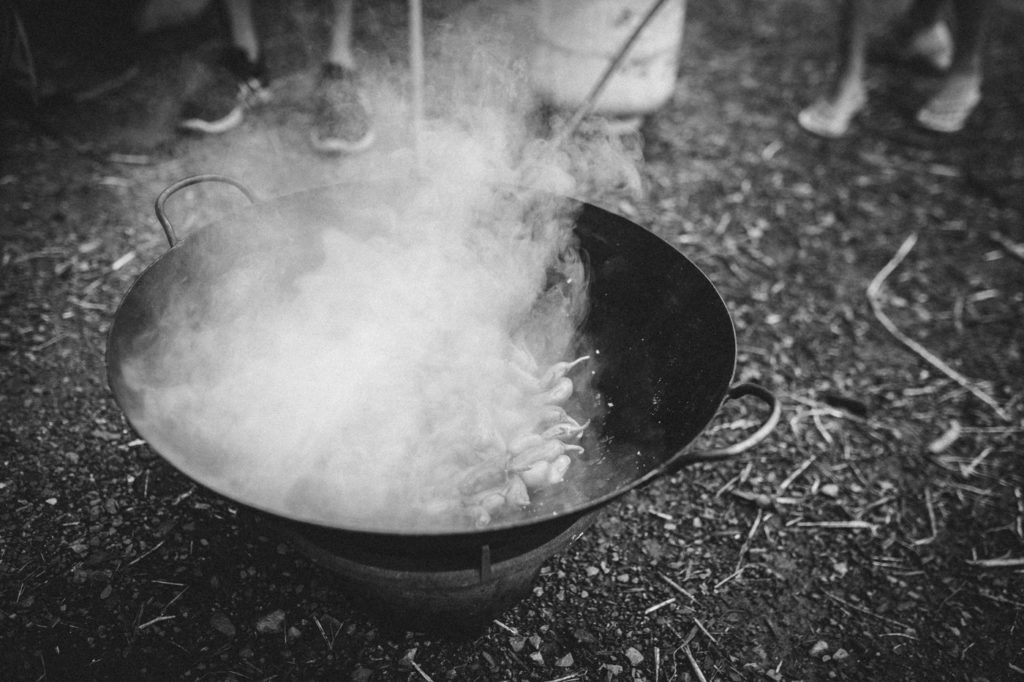
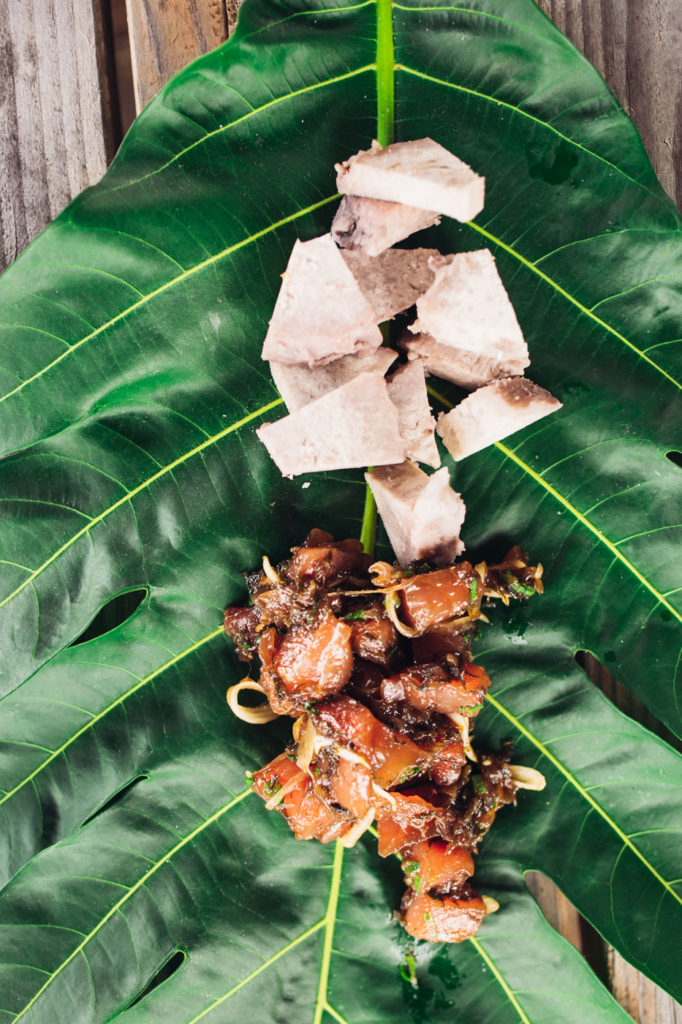
“I cook from my heart,” says Noguchi. “This what I know. I don’t ever expect my plates in Art Culinaire, but that’s fine. We feed communities. We feed the masses.”
And one day taro may have to. Luckily, Noguchi loves cooking with taro because “it’s cooking with what we have,” but it’s clear his senses lead him in other ways that keep his eye on the future.
“From a scientific perspective, can I tell you about rising barometers? No,” he says. “But I can tell you what I’ve seen with my own eyes, the change, and the differences … Tuahine doesn’t rain the same way anymore. When you talk to elders, every different district will tell you, ‘It doesn’t do this or it doesn’t do that anymore.’ You can feel [climate change] in the water.”
Citing one example, Noguchi explains taro at Kākoʻo ʻŌiwi is fed through freshwater systems that rely on cool water originating from the top of the mountain. As the water naturally flows down into the valley it warms, which means the more desirable plots of land used to be those in the back of the valley. Cooler water is less susceptible to parasites and spreading disease.
“In ’97, we had the big El Nino,” Noguchi recalls. “There’s this little thing called the apple snail, which was only found down by the ocean and the warm waters. Within one season, apple snail made its way all the way to the back of the valley. The water got warmer.”
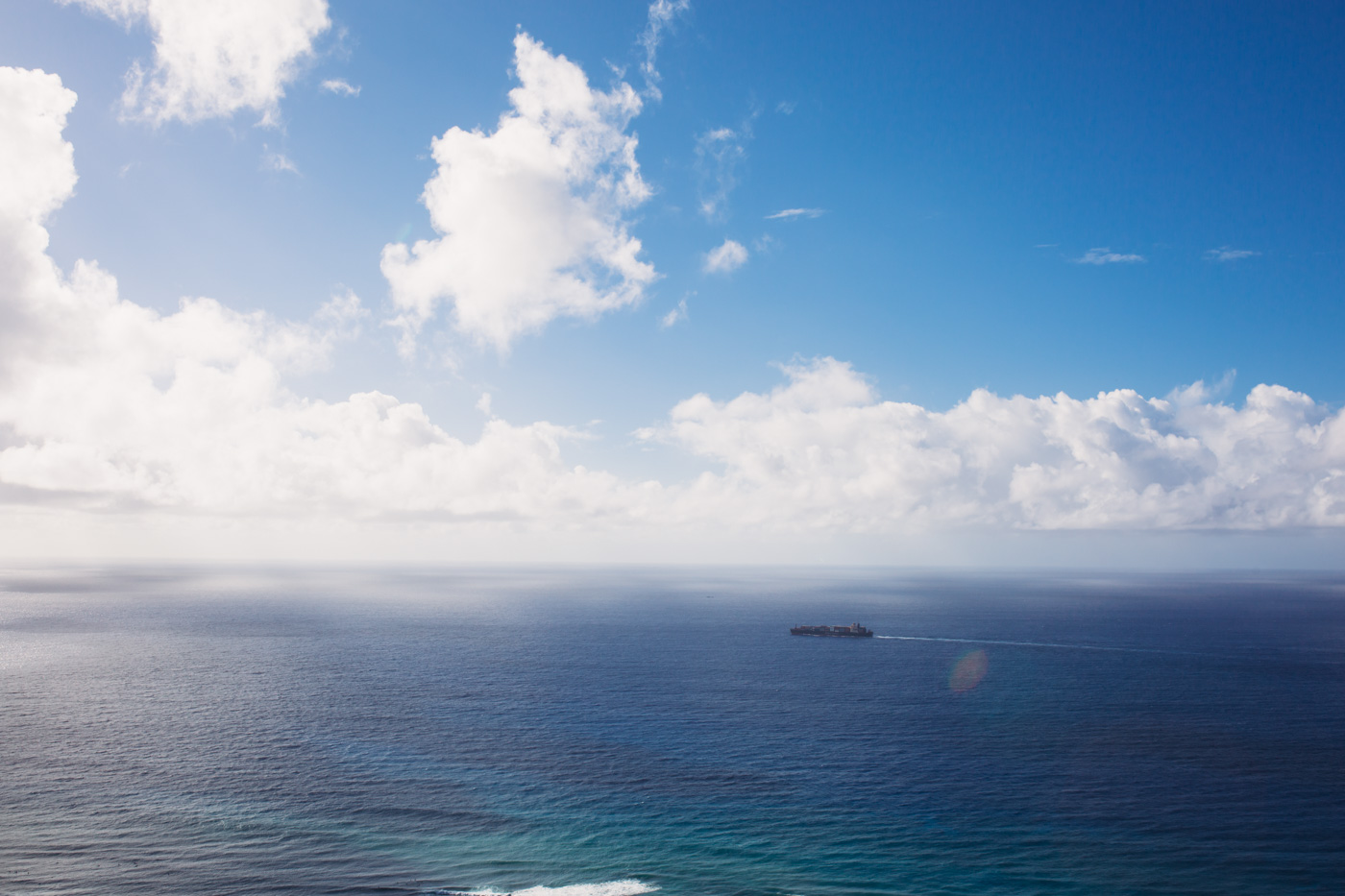

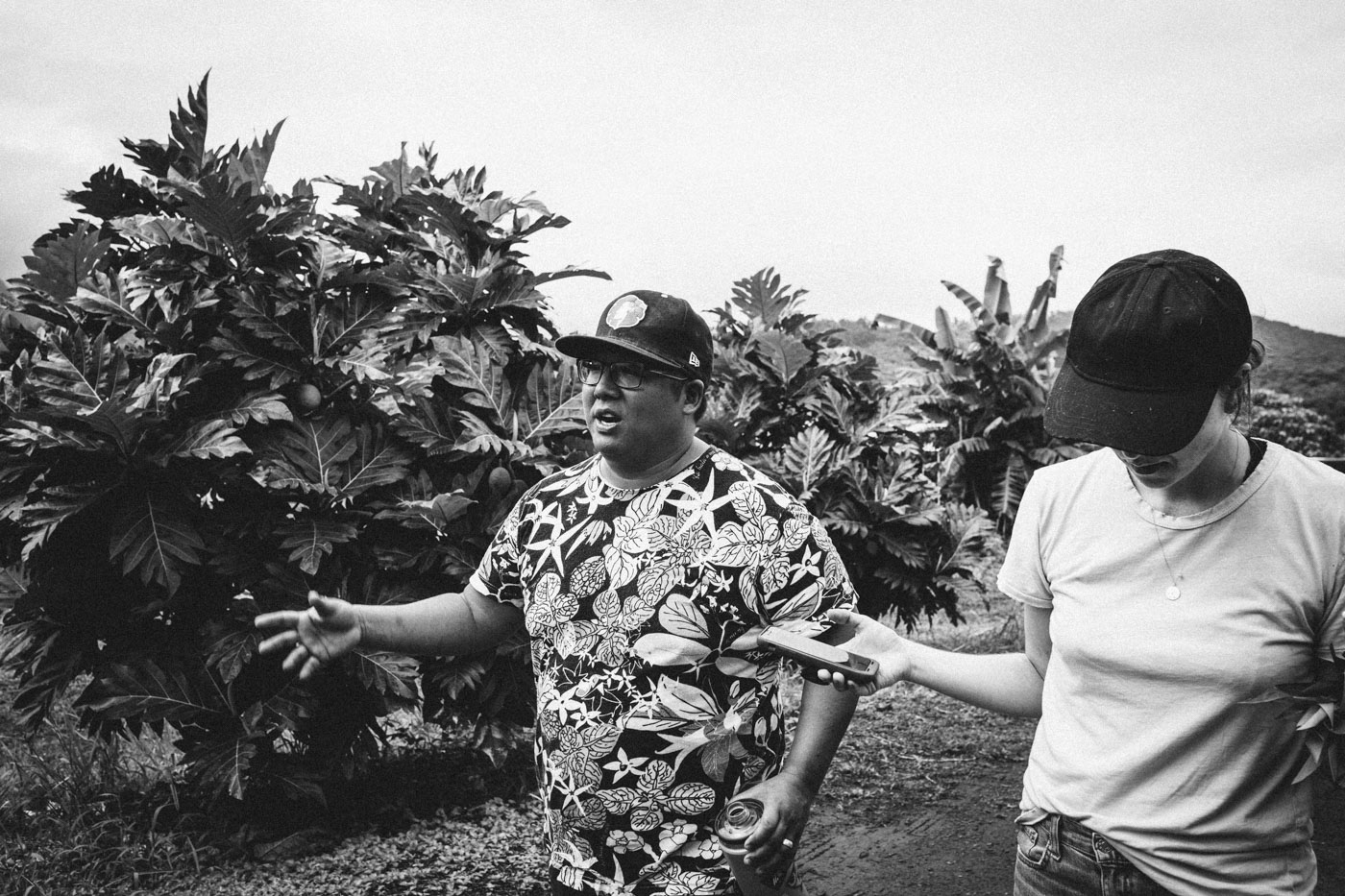
Why does that matter? Even taro isn’t immune from every aspect of climate change, and it’s this small apple snail that poses one of the plant’s greatest threats. Snails either eat the young taro shoots or chew into the top of a corm so that bacteria and other pathogens can enter. The pest has been known to decimate crop yields and drastically reduce their quality.
As Noguchi tells me, great care is continually taken to ensure that no apple snails are found in Kākoʻo ʻŌiwi’s valley today.
——
Taking in the view from Kākoʻo ʻŌiwi, a sprawling landscape that isn’t quite as static as it appears, it’s almost hard to reconcile. Not just the apple snails, but the subtle changes apple snails and valley rains seem alert to before the rest of us. I can only wonder at the amount of disaster it will take before the majority of us live (at least a little more) like the Hawaiians do: in humble deference to the earth that sustains us. When the planet thrives, then so do we.
Editor’s Note: This story was made possible with the support and collaboration of Hawaiian Airlines.






Our comments section is for members only.
Join today to gain exclusive access.